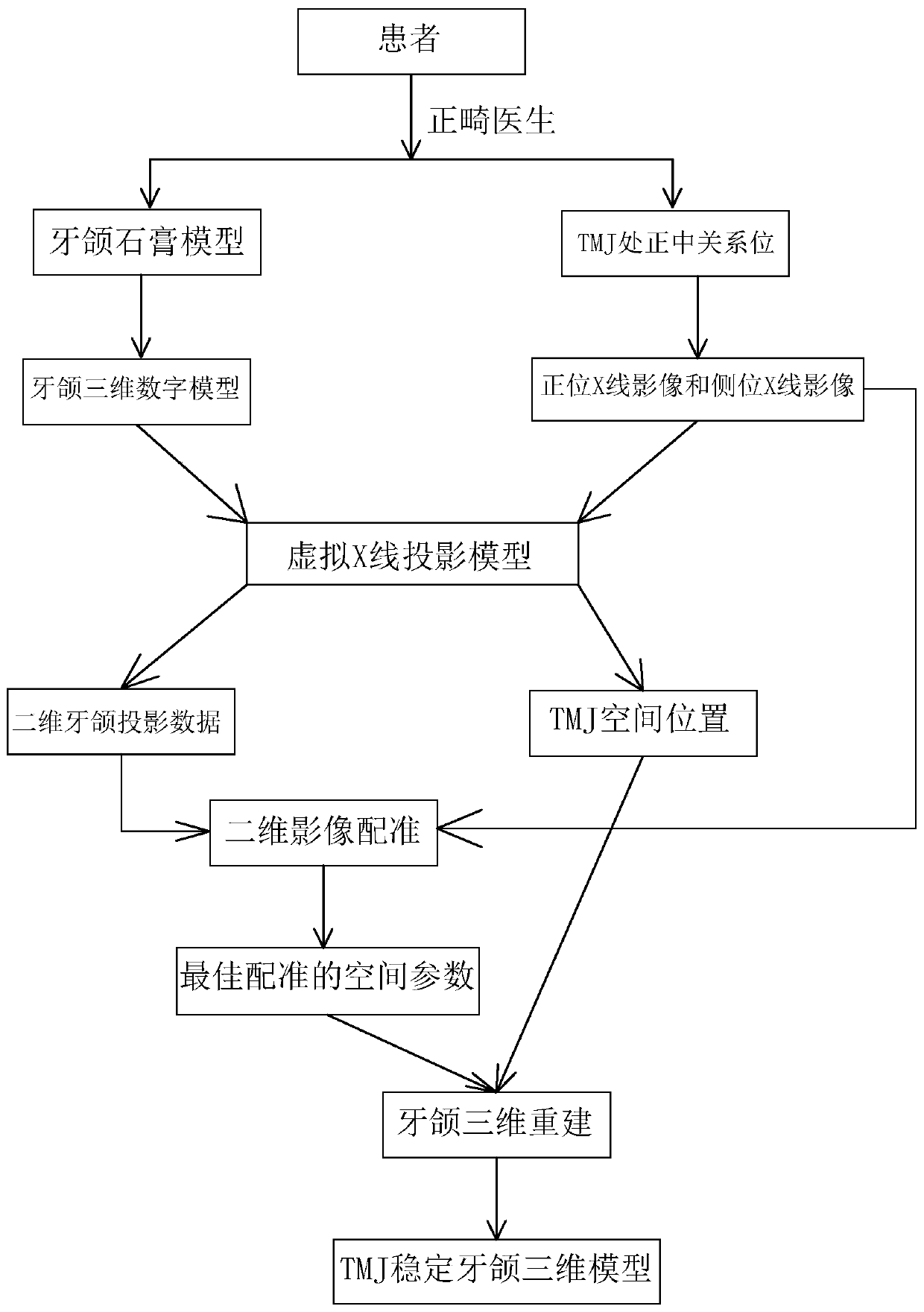Tooth jaw three-dimensional digital modeling method based on temporal-mandibular joint stability
A temporomandibular joint, three-dimensional digital technology, which is applied in the field of three-dimensional digital modeling of the teeth and jaws based on the stability of the temporomandibular joint, can solve the problem of high radiation risk, expensive, unaware of the importance of the close relationship between orthodontics, affecting orthodontics. effects, etc.
- Summary
- Abstract
- Description
- Claims
- Application Information
AI Technical Summary
Problems solved by technology
Method used
Image
Examples
Embodiment Construction
[0016] Such as figure 1 As shown, a kind of three-dimensional digital modeling method of dental jawbone based on temporomandibular joint stability of the present invention comprises the following steps:
[0017] Step 1: Take a plaster model of the patient's teeth and jaws, and use a 3D scanner to scan the plaster model to obtain a three-dimensional digital model of the teeth and jaws, or directly use an intraoral scanner to obtain a three-dimensional digital model of the teeth and jaws;
[0018] Step 2: The orthodontist adjusts and places the patient's temporomandibular joint (TMJ) in the median position, which means that the temporomandibular joint is in a stable state, and takes the patient's head frontal and lateral X-ray images;
[0019] Step 3: Refer to the spatial geometric relationship and imaging mechanism of the X-ray cephalometer, construct a virtual X-ray projection model, and its reference coordinate system, specifically refer to the X-ray cephalometer, construct a...
PUM
 Login to View More
Login to View More Abstract
Description
Claims
Application Information
 Login to View More
Login to View More - R&D
- Intellectual Property
- Life Sciences
- Materials
- Tech Scout
- Unparalleled Data Quality
- Higher Quality Content
- 60% Fewer Hallucinations
Browse by: Latest US Patents, China's latest patents, Technical Efficacy Thesaurus, Application Domain, Technology Topic, Popular Technical Reports.
© 2025 PatSnap. All rights reserved.Legal|Privacy policy|Modern Slavery Act Transparency Statement|Sitemap|About US| Contact US: help@patsnap.com

